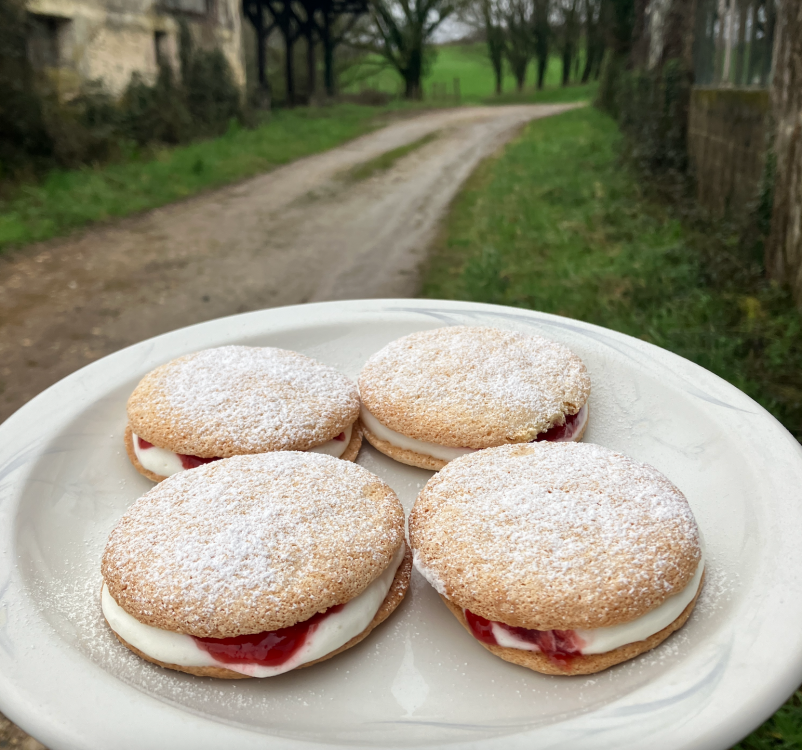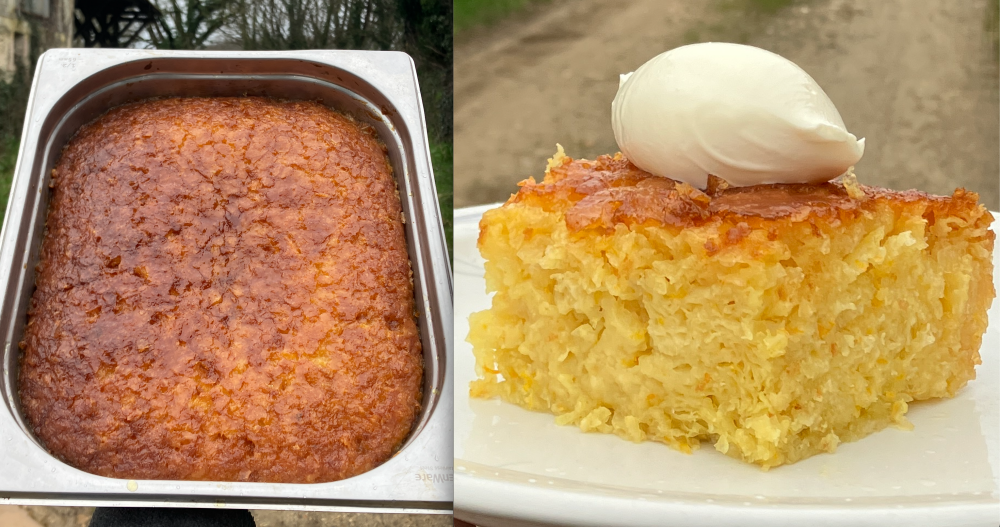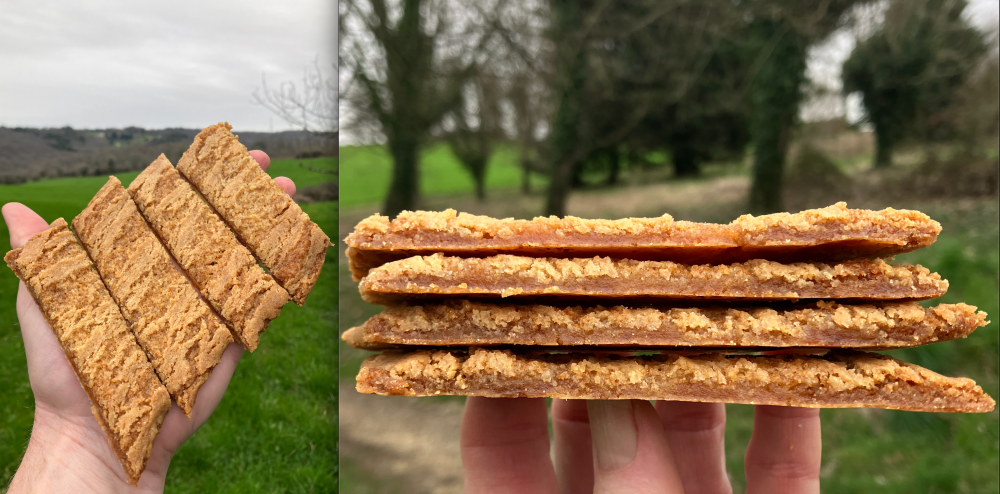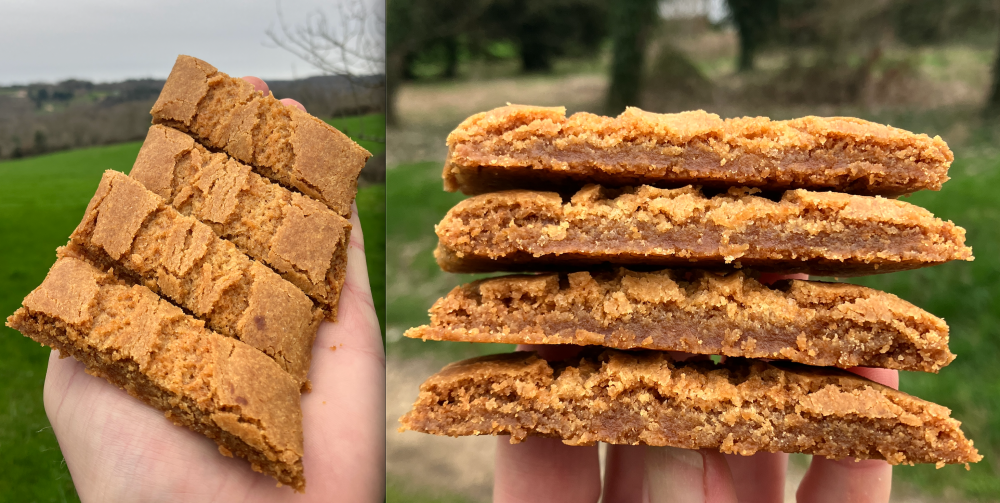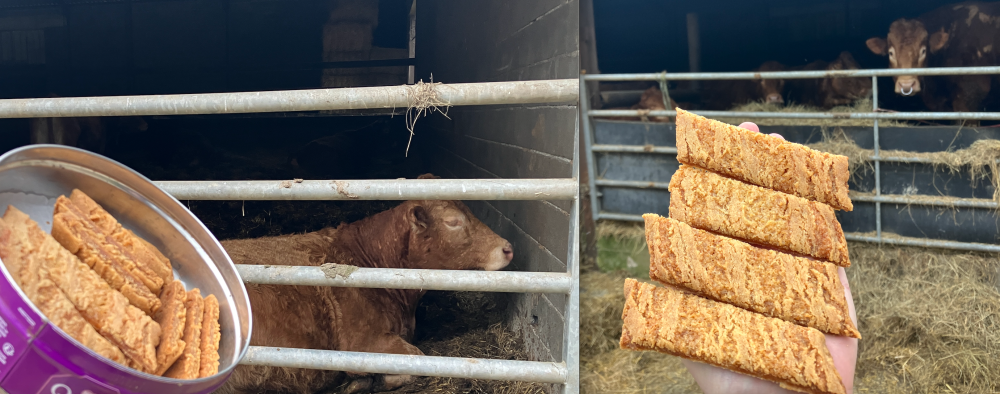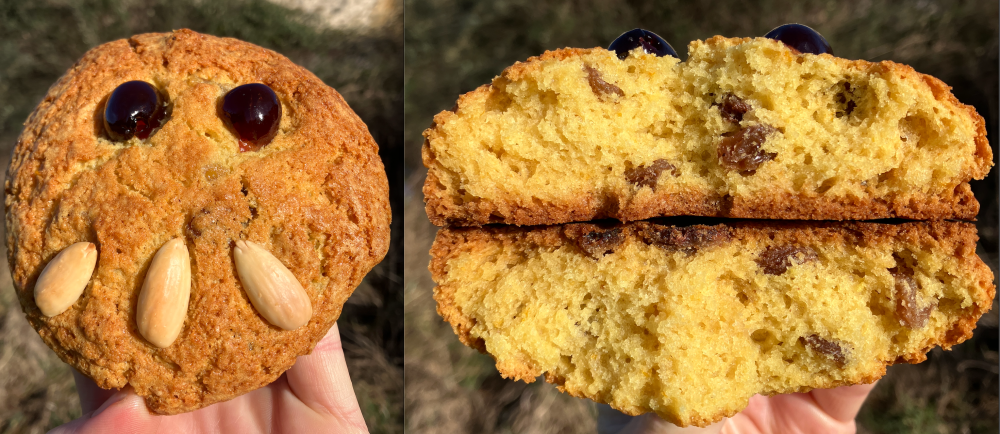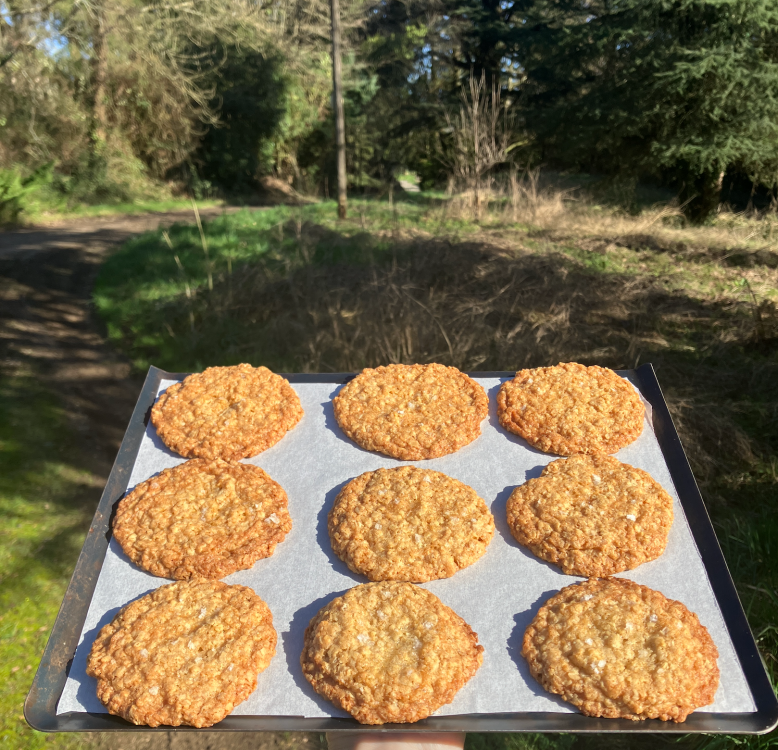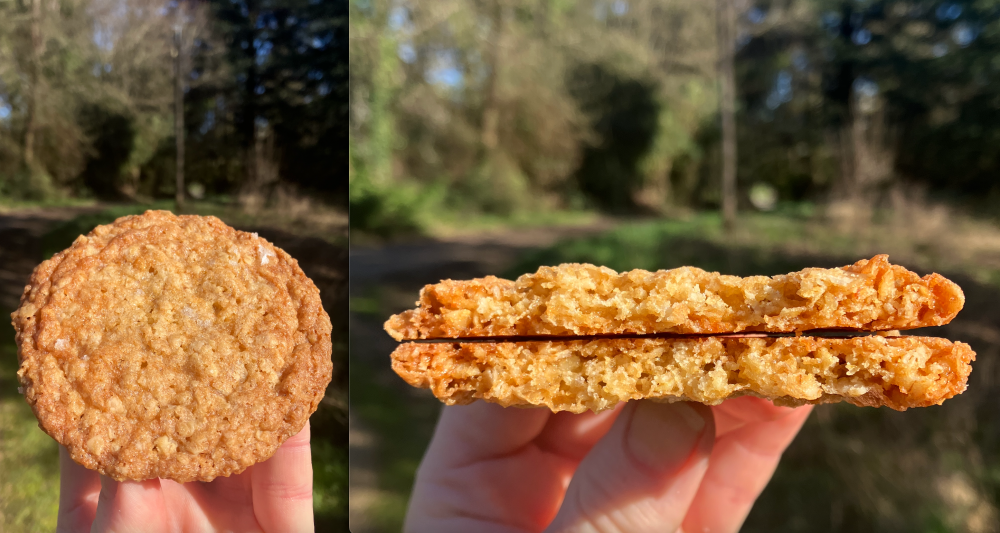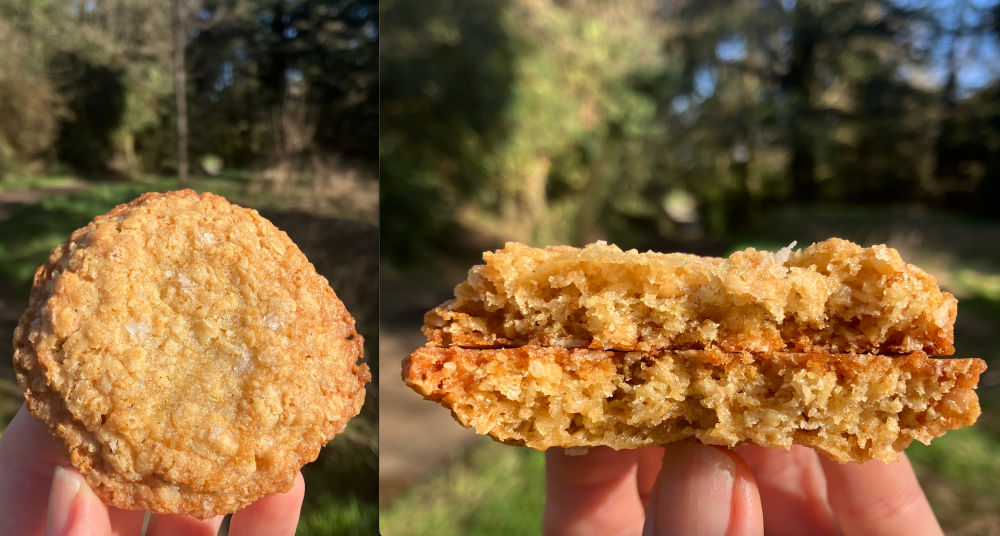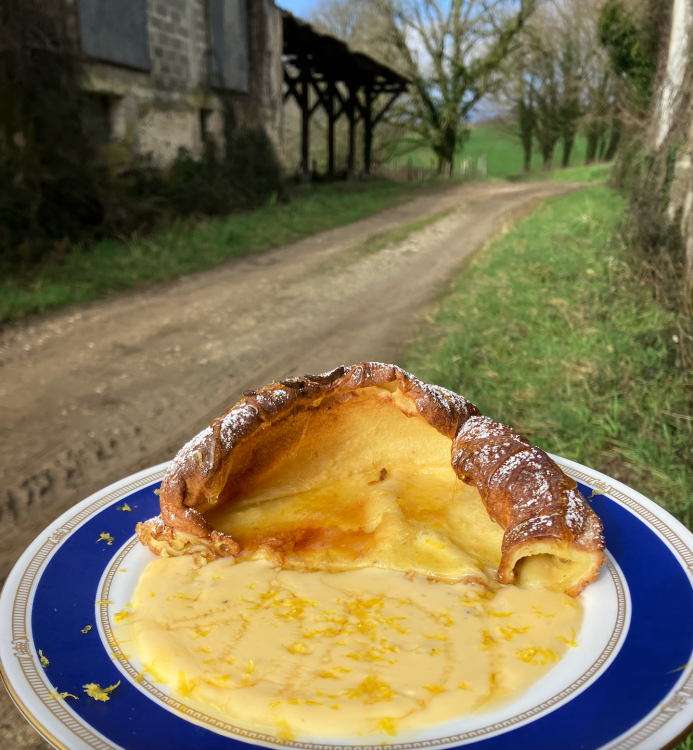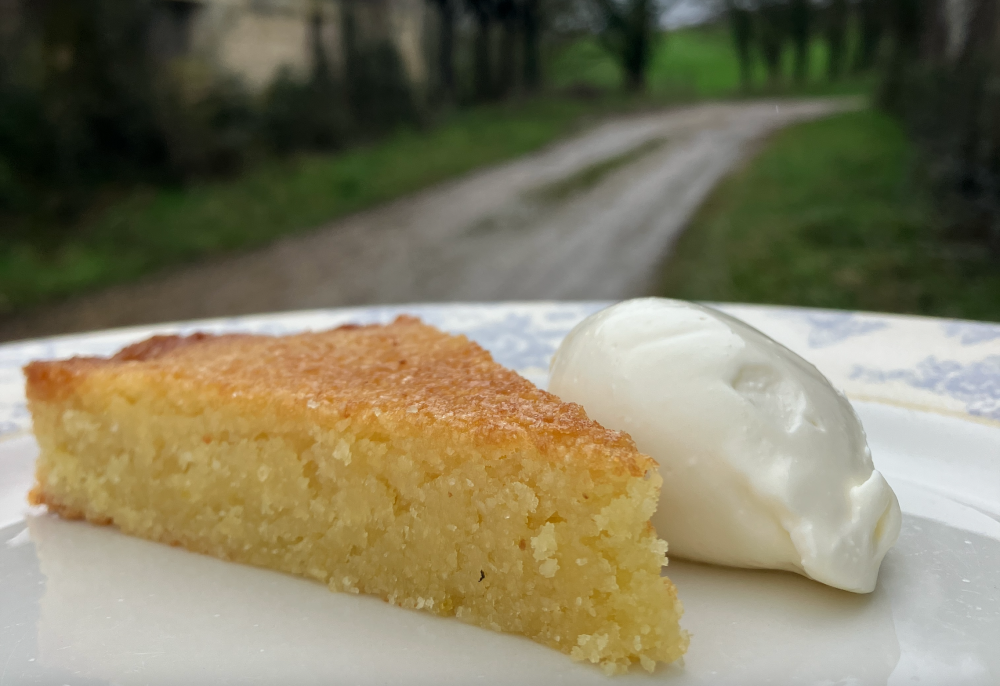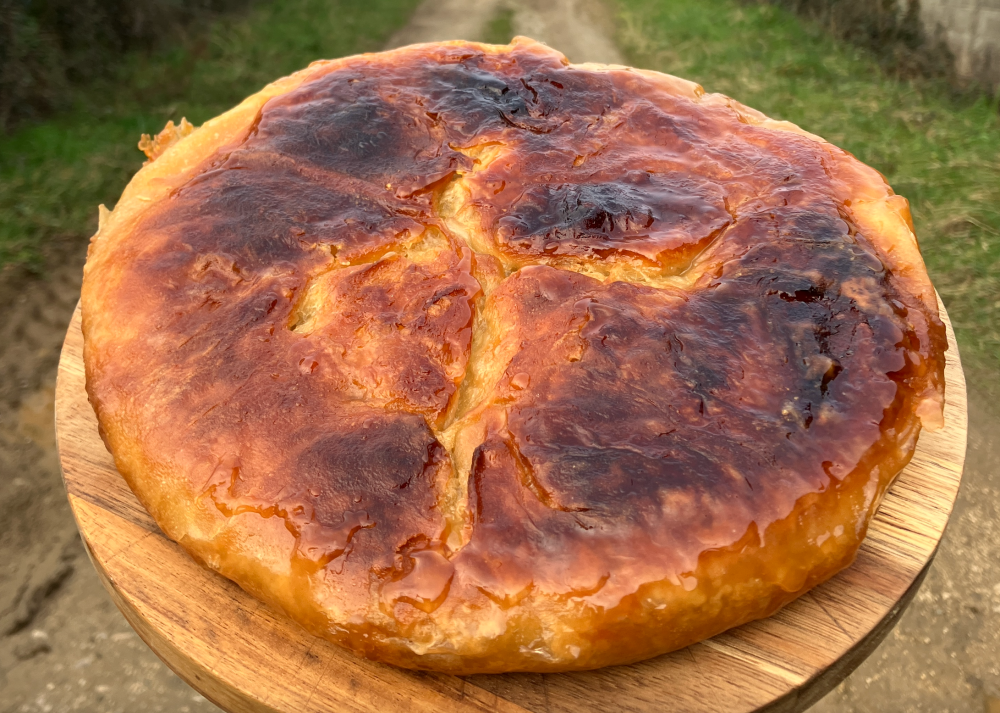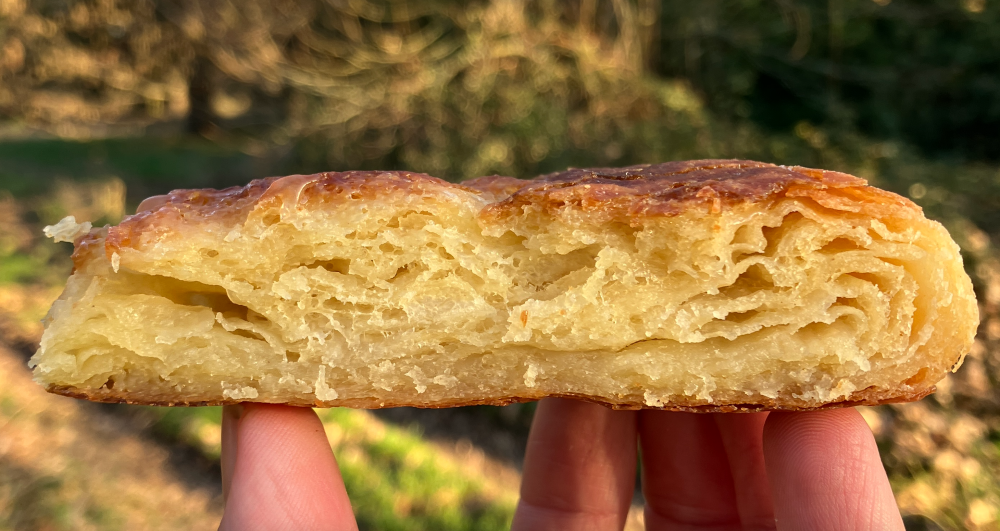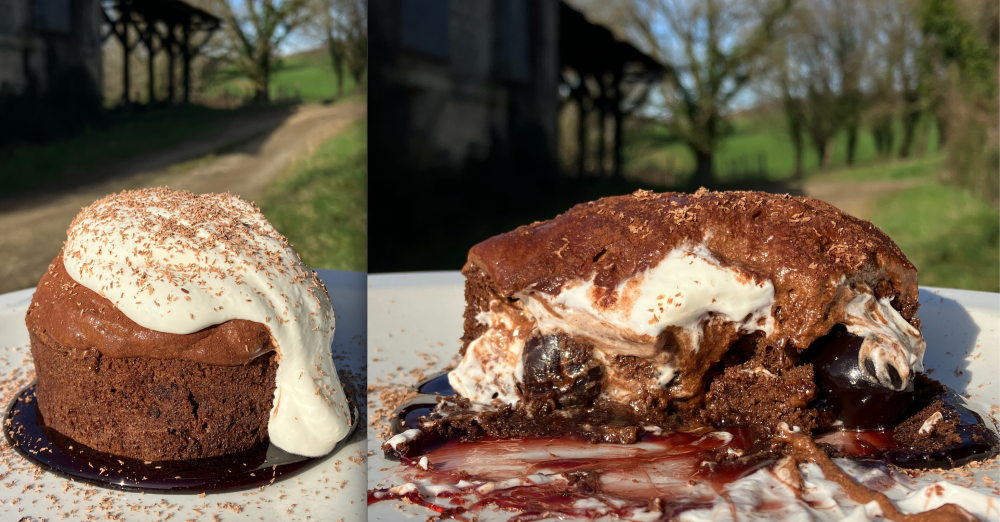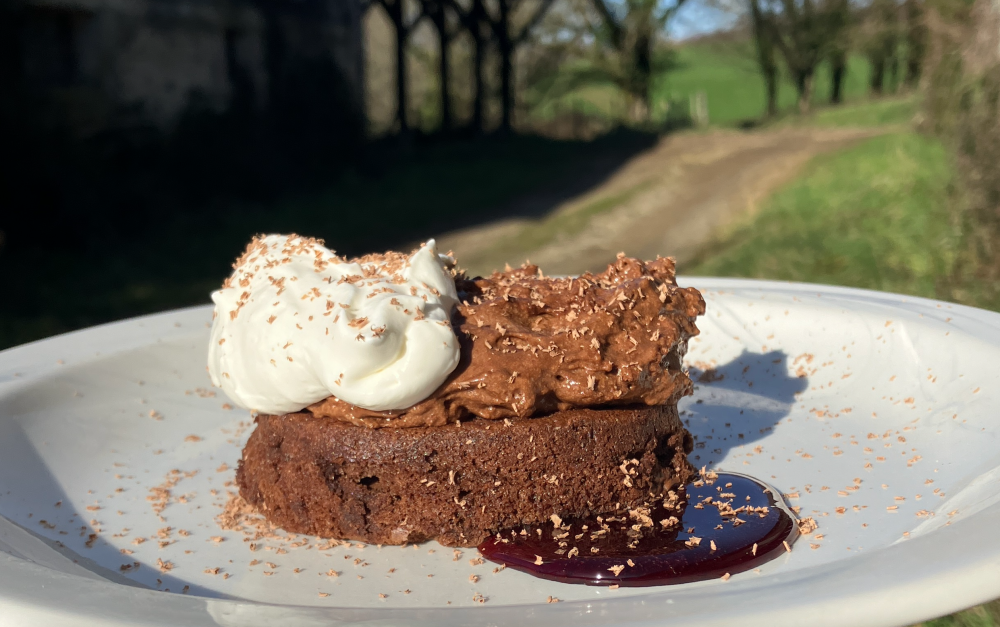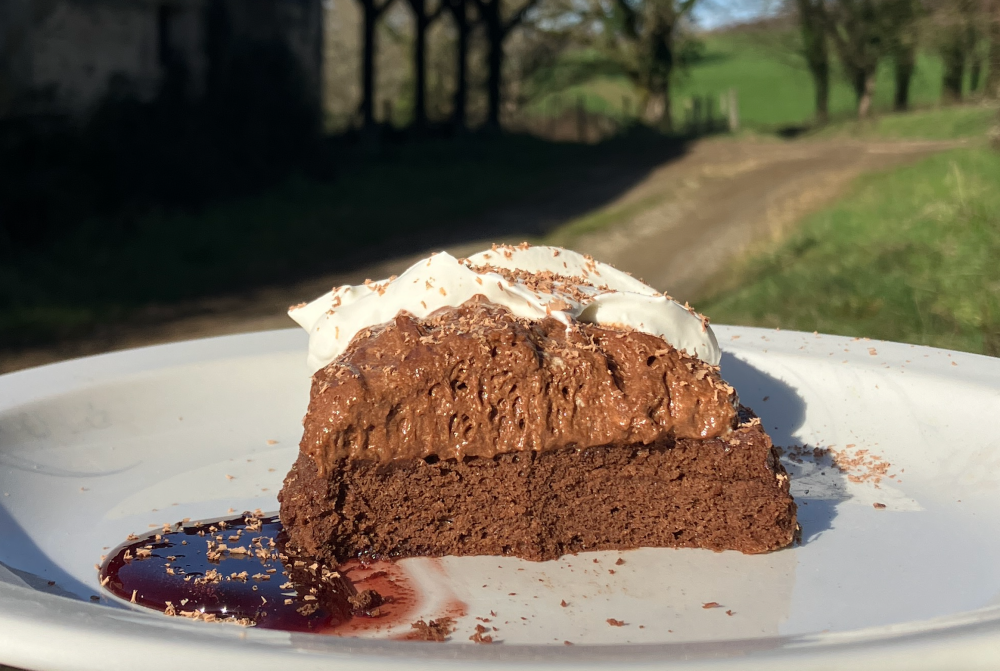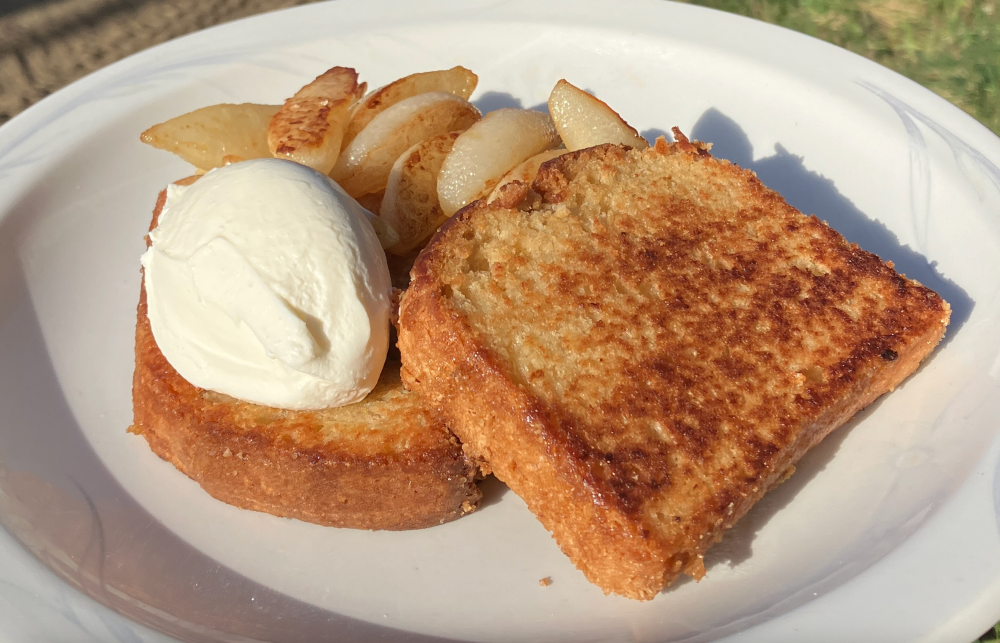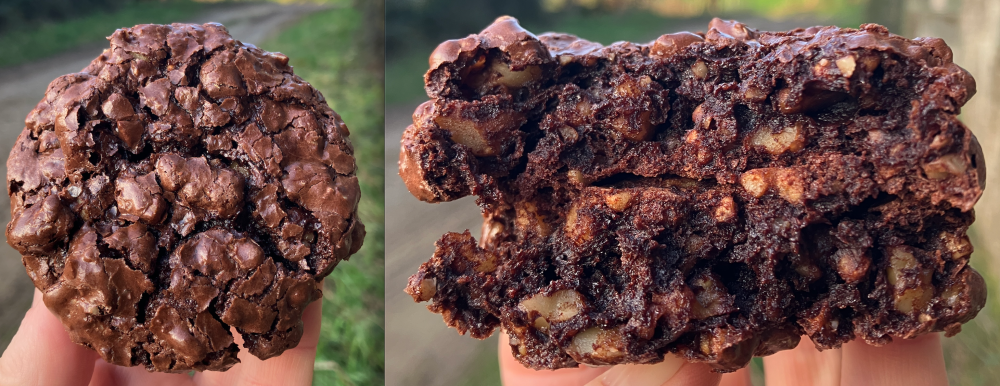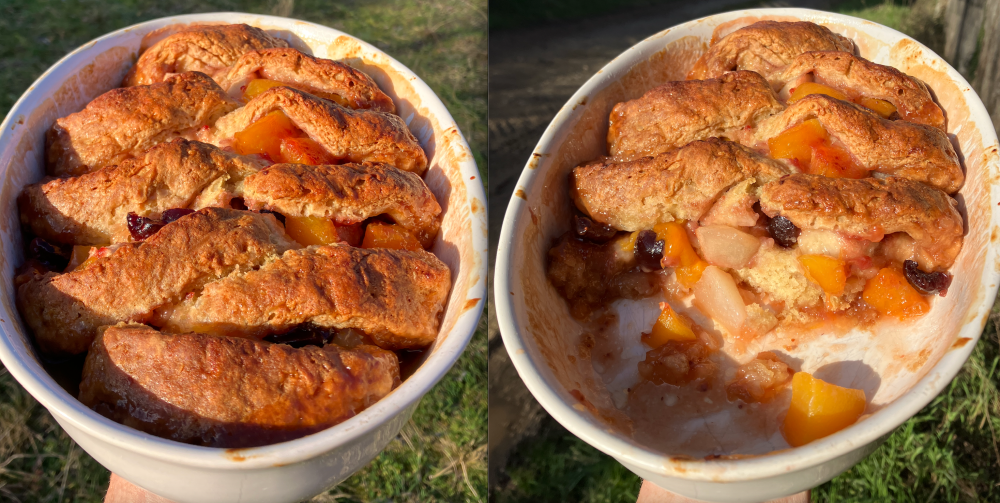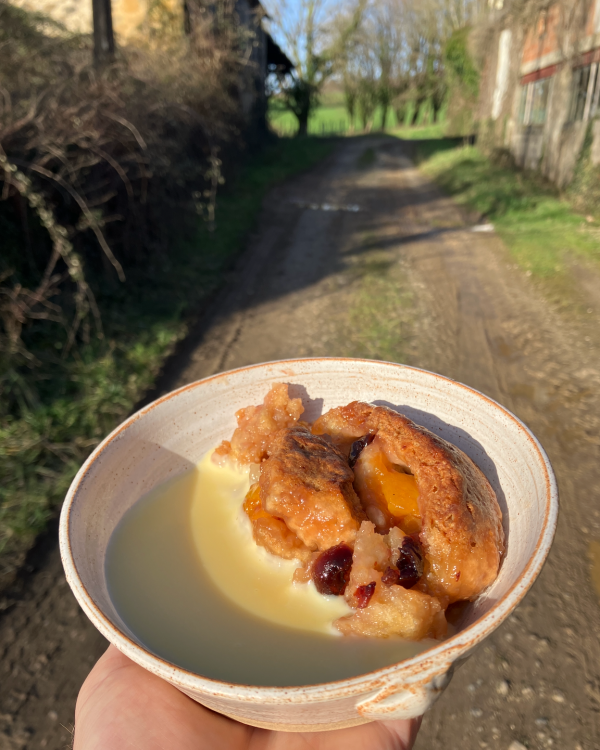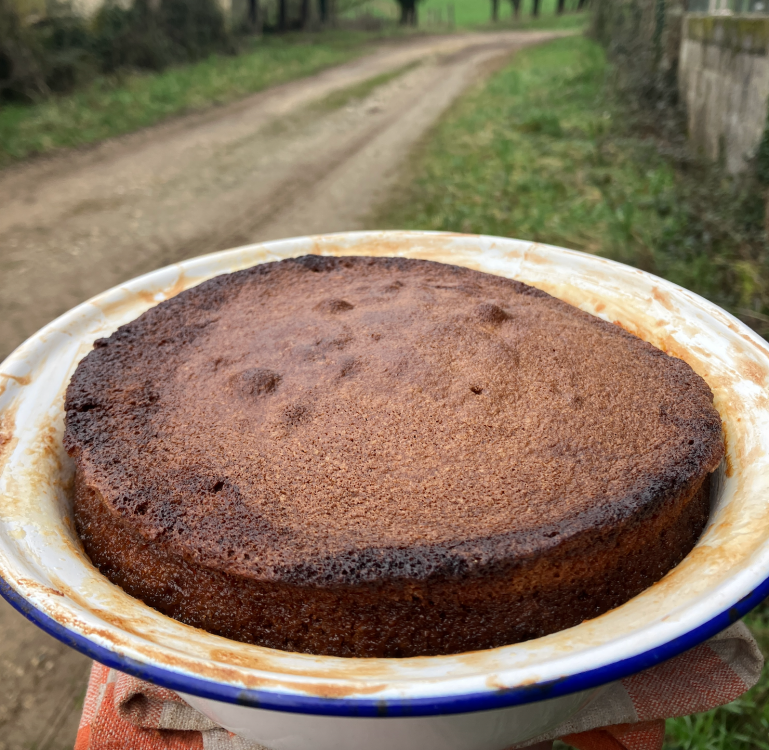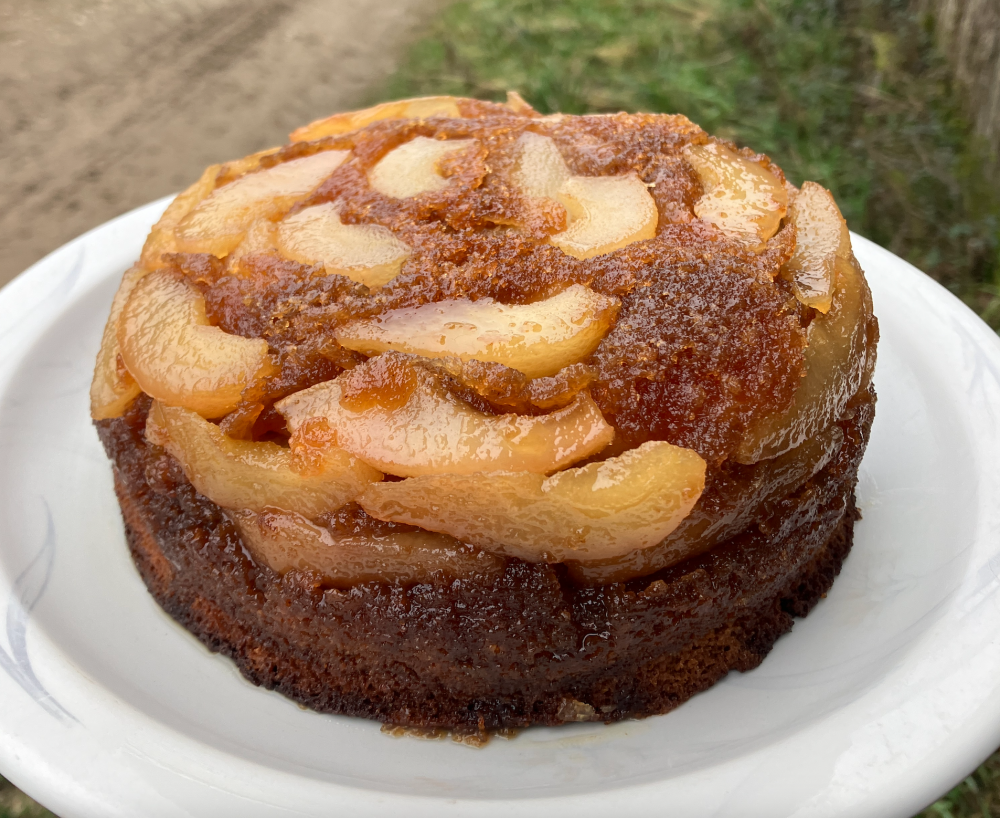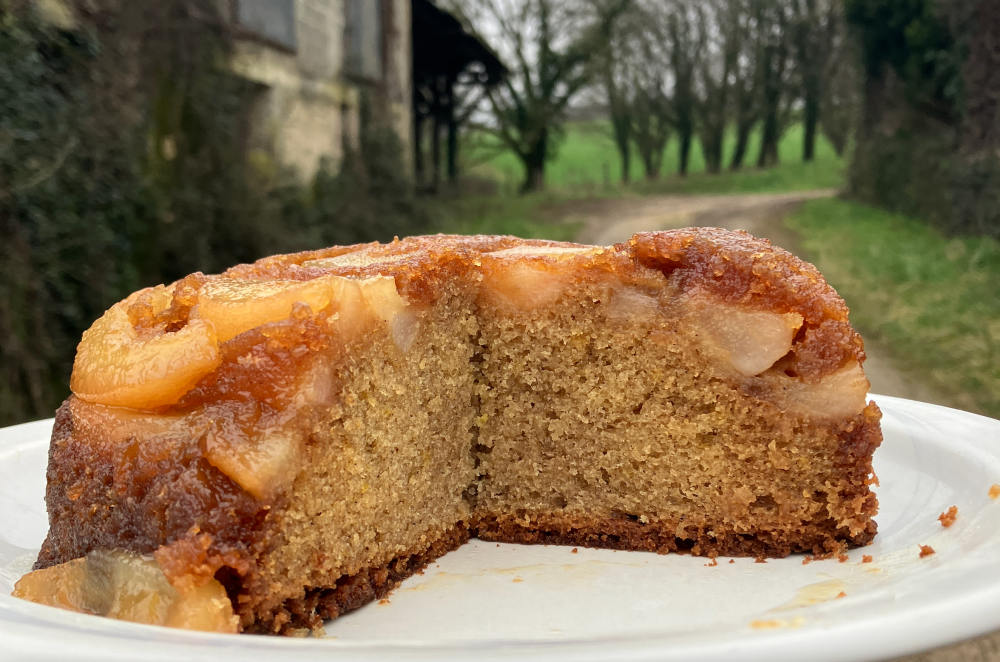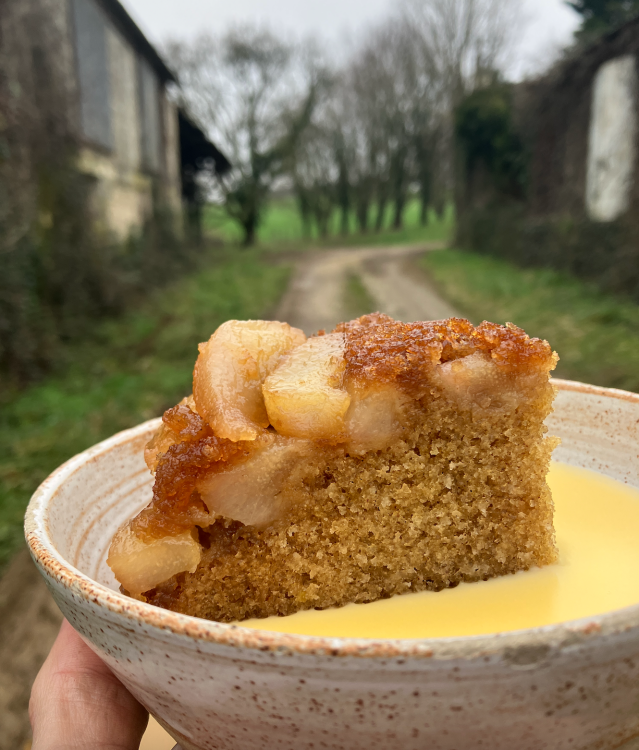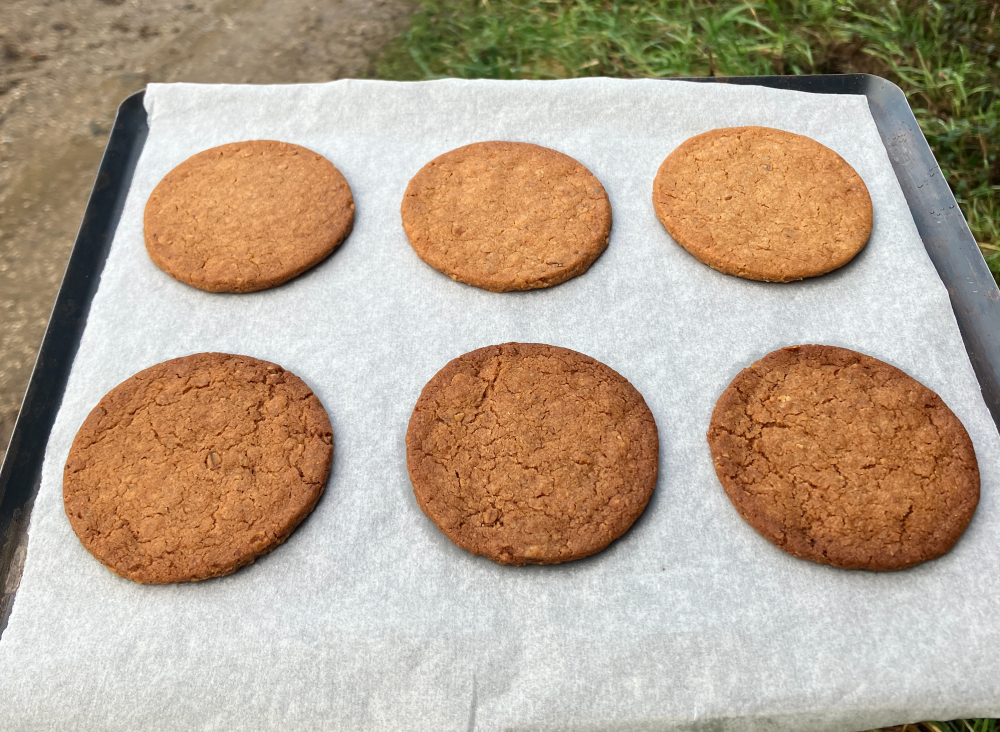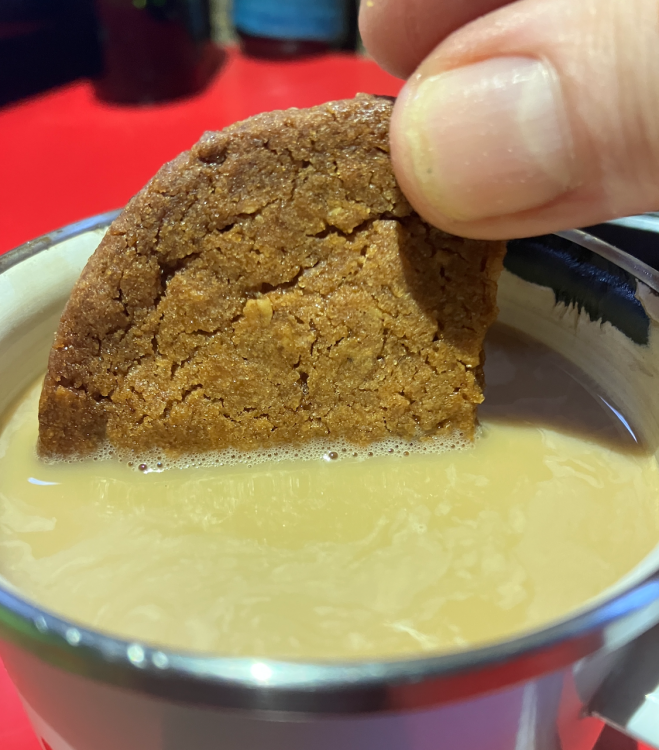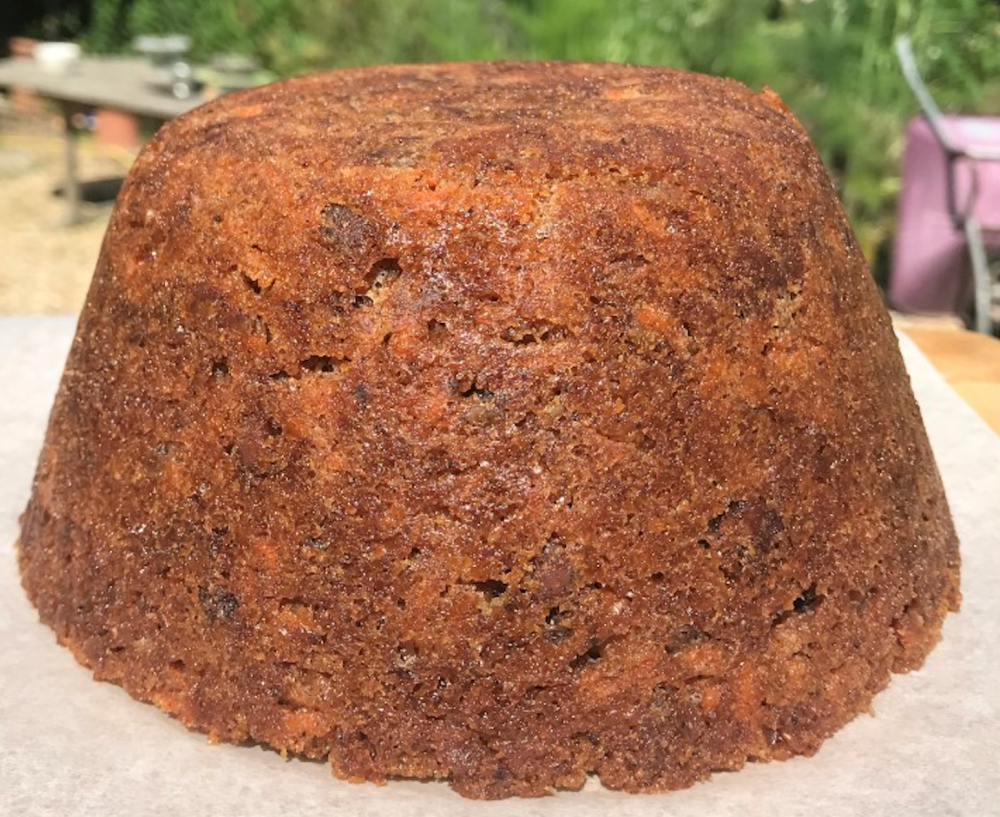
Pete Fred
participating member-
Posts
524 -
Joined
-
Last visited
Content Type
Profiles
Forums
Store
Help Articles
Everything posted by Pete Fred
-
Your Daily Sweets: What Are You Making and Baking? (2017 – )
Pete Fred replied to a topic in Pastry & Baking
It's been quite a few years since I made Raspberry and Rose Powder Puffs, so, seeing as they're pretty much store cupboard ingredients, I made a quick batch... There's nothing much to them, really. The shells are similar to ladyfinger/savoiardi biscuits and bake-up crispy and brittle. But after sandwiching with cream and jam, and a few hours in the fridge, they transform into soft sponges. The resulting 'powder puffs' are incredibly light and delicate. I overfilled mine a little and accidentally discovered the fantastic new technique of working my way around the perimeter sucking out some of the filling before chomping down on the cookie itself. Classy. My recollection is that they soften even more after an overnight rest, so I'm looking forward to tomorrow's suckfest. I couldn't find the Ottolenghi/Goh version online, but it's very similar this one. -
Your Daily Sweets: What Are You Making and Baking? (2017 – )
Pete Fred replied to a topic in Pastry & Baking
That's me. 😉 -
Your Daily Sweets: What Are You Making and Baking? (2017 – )
Pete Fred replied to a topic in Pastry & Baking
With a surplus of oranges to use up, most went into a big-ass portokalopita... And another couple into this citrusy version of Dorie Greenspan's Everything Cake... Aware the fruit might sink, I added ground almonds to the batter to bulk it up a bit, and also because I like the texture they bring. It wasn't anything special as an orange cake - the portokalopita is always the clear winner in that particular race - but I liked the cake itself: it had a lovely, buttery crumb. Dorie says she likes it with a simple icing, and that chimed with a cake that a local bakery sells... The lady in the shop told me it's a kind of almondy madeleine cake, flavoured with rum, lemon and vanilla. It was good, so I think I'll do those flavours next time I make Dorie's cake. -
Your Daily Sweets: What Are You Making and Baking? (2017 – )
Pete Fred replied to a topic in Pastry & Baking
-
Your Daily Sweets: What Are You Making and Baking? (2017 – )
Pete Fred replied to a topic in Pastry & Baking
Made a couple of batches of Swedish caramel cookies (kolakakor/kolasnittar) with slightly different ratios and methods. These are from Kantine in San Francisco (recipe)... And these from the St John Bakery in London (recipe)... I preferred the Kantine ones. Despite appearances, they were the chewier of the two. The St John ones were just too hard. I took some round to the cows and was greeted with a mixture of indifference and curiosity... -
Your Daily Sweets: What Are You Making and Baking? (2017 – )
Pete Fred replied to a topic in Pastry & Baking
Yeah, they appear to be pretty much the same. For the dough, the only significant difference, bakers' percentage-wise, is the amount of sugar: the rascal has double the sugar. But the fishermen make up for it with half as much again of the dried fruit. It seems Yorkshire miners and Genoese fishermen know a thing or two about tasty treats! -
Your Daily Sweets: What Are You Making and Baking? (2017 – )
Pete Fred replied to a topic in Pastry & Baking
There's a small chain of tea rooms back in the UK called Bettys (that missing apostrophe bugs me every time), and one of their most popular creations is the Fat Rascal®️. I was curious to try reverse-engineering it from the information on their website, and as far I can make out it's pretty much your standard rock cake recipe: 8oz SR flour; 4oz each butter, sugar, dried fruit; an egg; and a splash of milk. All they seem to have done is add candied peel and a face... Admittedly, quite a creepy face in my copycat version. I didn't have glacé cherries so subbed in darker sour cherries, so maybe that contributed to the sinister look. And perhaps smaller almonds would've made for a less aggressive grill. Bettys use candied orange peel in theirs; I used candied lemon plus the zest of an orange. Theirs has currants, I could only get hold of raisins and sultanas. It's been about 10 years since I had a Bettys Fat Rascal®️ so I can't say how close this was, but it was very good. They sell around half a million a year, and it's easy to see why. I also made a batch of the Thin and Crispy Oatmeal Cookies that @weinoo posted a few weeks back... The top two rows were the thin and crispy... The bottom row was shaped and cooked a little more like a regular oatmeal cookie... Thinner was better. As well as the crispiness, they seemed to taste more oaty. This was also helped by having no added spice (apart from vanilla) which meant the oats shone. Good cookie. -
Your Daily Sweets: What Are You Making and Baking? (2017 – )
Pete Fred replied to a topic in Pastry & Baking
Browsing a Michelin-starred restaurant's social media, I was amused to see that for the staff meal one day they had Yorkshire pudding with golden syrup and crème anglaise (I guess an American equivalent might be popovers or Dutch Baby with maple syrup). With today being Pancake Day* in the UK I thought I'd give it a go... I flavoured the Yorkie with a bit of tonka and grated over some lemon zest. I enjoyed it. Might make another. *Apparently this is a source of amusement to many Americans. -
Your Daily Sweets: What Are You Making and Baking? (2017 – )
Pete Fred replied to a topic in Pastry & Baking
A couple of ageing lemons on the countertop whispered Nigella Lawson's lemon polenta/cornmeal cake to me... Describing it as damp and a little gritty doesn't sound too flattering but it's really good. Sometimes, like here, I leave out the baking powder for a more compact texture... Warm cake, cold cream, love it! -
Your Daily Sweets: What Are You Making and Baking? (2017 – )
Pete Fred replied to a topic in Pastry & Baking
This was my first kouign amann in several years... I was a little bit rusty: the lamination could've been better, and I need to outsmart my current oven for a more even bake. Tasted great, though, especially still warm from the oven when the butter is just teetering on melted, before it firms up a touch. -
Your Daily Sweets: What Are You Making and Baking? (2017 – )
Pete Fred replied to a topic in Pastry & Baking
I made another chocolate cake today, mainly to experiment with the serving size and to try some whole cherries in the cake element... I'm not sure it brought anything to the party. It's probably better as a purely chocolate cake. And the food stylist in me cheated by manually inserting the right-hand cherry due to the cut looking a little skimpy. I tried to cover up the deception with a smear of cream, but it's fooling nobody. 🙄 #cherrygate -
Your Daily Sweets: What Are You Making and Baking? (2017 – )
Pete Fred replied to a topic in Pastry & Baking
Hmmm, can't think of much, other than to recommend reserving a third of the batter rather than a quarter. I like the extra moussiness. Here I scaled it down to a couple of small (10cm/4-inch) cakes. Perfect for one serving*. I think M. Pignolet paired it with raspberry sauce in his restaurant. *Yes, I did eat the other one. Sorry (not sorry). -
Your Daily Sweets: What Are You Making and Baking? (2017 – )
Pete Fred replied to a topic in Pastry & Baking
I haven't made this chocolate cake via Damien Pignolet in a bunch of years... I'd forgotten how good it is. Easy, too. It's basically just a baked chocolate mousse with some of the raw mixture as a topping. I paired it with some reduced cherry syrup and a crème fraîche chantilly. Recipe here. -
Apple (or pear) pie - questions about improving results
Pete Fred replied to a topic in Pastry & Baking
Bramleys are the most popular cooking apple in the UK. They break down quickly into a fluffy mush with quite a sharp, intense flavour. I’ve never really understood what differentiates a cooking apple from an eating/desert apple, though. Alternatives to the Cox’s would include Gala, Pink Lady or Braeburn, but any decent tasting (good luck with that!) apple you have in your part of the world I’d imagine would be fine. -
Your Daily Sweets: What Are You Making and Baking? (2017 – )
Pete Fred replied to a topic in Pastry & Baking
Yep, that's the one. -
Your Daily Sweets: What Are You Making and Baking? (2017 – )
Pete Fred replied to a topic in Pastry & Baking
After recent adventures with custards and creams I had a surplus of egg whites. Time to dig out a couple of old reliables. François Payard's chocolate and walnut cookies always deliver... And Maxime Frédéric's l’annécien is a good way to use up a dozen or so whites... Admittedly quite plain looking, but it has a nice crunchy crust and a pleasing crumb, flavoured with tonka. It was made last week, so the last couple of slices today needed new life breathing into them. I sautéed a couple of small pears in butter then fried the slices briefly in the pan juices... -
Apple (or pear) pie - questions about improving results
Pete Fred replied to a topic in Pastry & Baking
Regarding the filling, maybe try making an apple stock with the cores and peelings (as described in this post and pdf). Haven't tried it myself; it's on my to-do list. -
Your Daily Sweets: What Are You Making and Baking? (2017 – )
Pete Fred replied to a topic in Pastry & Baking
You missed that I made a roly-poly, not a sticky toffee pudding. 🤦♂️😉 (From the book Sweet Dreams at the Internet Archive.) -
I used to: Heat the moulds in the oven so they're fairly hot. Microwave the beeswax in a jug until fluid and hot. Fill a mould with wax. Then, using an oven glove, pick up the mould and pour the wax into an empty mould, twisting to ensure the mould you're holding is fully coated. Repeat. If you go back through Kriss Harvey's timeline on Instagram there are several cannele videos, and you can see a couple of methods he uses. Like this... I think this is and a blowtorch is a neat way to do it. Beeswax is an absolute bugger to clean up; doing this over baking paper you can just scrunch it up and get on with your life.
-
Your Daily Sweets: What Are You Making and Baking? (2017 – )
Pete Fred replied to a topic in Pastry & Baking
Roly-poly is an old-fashioned nursery pudding ( NYT article on English puddings, paywalled )... roll out a square of suet pastry, spread with jam, roll into a log, steam, slice, eat. I recently came across a cheffy version by Gary Rhodes... pastry, jam, scatter with fruit, roll, slice, layer in dish, pour over a syrup, bake... I used what was to hand: strawberry jam, tinned peaches, pears, and sour cherries. The suet pastry was pleasingly soft and doughy underneath where it had absorbed the syrup, and nice and crispy up top. It was good. I rounded it off with a generous hand from a jug of Bird's custard, as usual... -
Your Daily Sweets: What Are You Making and Baking? (2017 – )
Pete Fred replied to a topic in Pastry & Baking
Pear and Cinnamon Bake was described as "an upside down pudding with pears bubbling in a treacle base and cinnamon sponge baking on top. When it's turned out, the treacle on the pears trickles stickly down and around the sponge". Sounds good... Now the recipe called for an hour at 200C/400F. I knew that was never gonna fly so went with 180C/350F instead. It was already excessively browned after half an hour so I turned it down to 160C/320F. I should've covered it but decided to let it be, thinking the, errrr, 'caramelised' base might be a feature rather than a bug. Anyway, it took 75 minutes in total. This was really just an upside-down pear cake rather than what I would think of as a pudding. Baking it meant it was quite cakey compared to a light, airy sponge if it had been steamed. I'm not sure what the point was. Even lashings of custard couldn't arouse much enthusiasm. It was ok, but this one won't be going into rotation. -
In her latest podcast (around 19m20s), Nancy Silverton talks about "revolutionizing" carrot cakes by, errrrr, using this exact method. I don't have her book so can't comment on whether the revolution also includes pineapple and coconut. 😉
-
Your Daily Sweets: What Are You Making and Baking? (2017 – )
Pete Fred replied to a topic in Pastry & Baking
I'm not sure if dunking a biscuit (cookie) in a hot beverage is a uniquely British thing or a universal human trait, but these are claimed to be "the perfect dunking biscuit"... I made a couple of batches, varying the cooking time... I preferred the lighter coloured ones; they had a more pleasing texture when soaked, but each to their own. Stand back, in we go.... Apologies for the manky mug... it's my bashed-up, enameled, workshop issue container of choice. Recipe here if you're a curious dunker (couldn't find metric online, unfortunately). -
The last time I made a carrot cake it was a Stella Parks recipe... I have no idea why it's so dark. I don't remember changing anything in the recipe. Anyway, it was good. I also tried steaming one, which was more moist, if that floats your boat... I like Pierre Hermé's take on carrot cake. It works well without a frosting. Like a lot of French cakes he uses plenty of ground (powdered) nuts for a soft, moist texture. Hit me up if you have translation issues. I also like the Rose Bakery carrot cake. It's not as heavy as a lot of recipes. They make it individual moulds in the shop, which looks cute. No matter which carrot cake I make, I always use the Rose Bakery topping. It's really good. I'm not sure if it will make a convert of you, but maybe whip up a small amount and have a taste. It's not achingly sweet like most.
-
Your Daily Sweets: What Are You Making and Baking? (2017 – )
Pete Fred replied to a topic in Pastry & Baking
I'm sure it's fine. I guess I just prefer weights.

